- Submissions

Full Text
Evolutions in Mechanical Engineering
Design and Application of Space Saving Vehicle LPG Tank
Fuat Kartal*
Faculty of Engineering and Architecture, Kastamonu University, Turkey
*Corresponding author:Fuat Kartal, Kastamonu University, Faculty of Engineering and Architecture, Mechanical Engineering Department, Turkey
Submission: November 18, 2019;Published: April 16, 2021

ISSN 2640-9690 Volume3 Issue4
Abstract
This study is concerned with the design and prototype application of multi - celled LPG tanks for the storage of LPG (Liquefied Petroleum Gas) in vehicles, which occupies 50% less space in the same LPG volume than the tanks in the vehicle baggage. Especially in hatchback vehicles, there is a new LPG tank design that can be used as an alternative with less space occupying the same LPG carrying capacity in the trunk compared to other tanks. If the benefits obtained in this study are listed; In passenger vehicles, 50% of the baggage usage can be achieved. It offers an alternative applicable tank preference for LPG conversion to the users who have luggage volume problems. As the number of conversions of gasoline vehicles to LPG will increase, the demand for LPG, which is less polluting than gasoline and diesel, will increase and thus prevent global warming. There is no need to remove the spare tire for LPG tank installation. The production cost of this tank can be produced at the same cost by using the existing cylindrical and toroidal tank production facility. Following the use and expansion of this tank, it will be produced from the strength composite (LNG, CNG and Hydrogen) to store other alternative fuels in the coming years. It can also be used in public transport and container vehicles.
Keywords: LPG; CNG; Hydrogen; LPG tank; Baggage problem; Ergonomics; Pressure tank; Alternative energy
Introduction
In this study, it is related to the design and prototype application of multi-cell LPG tank made of steel sheet which takes 50% less space in the same LPG volume compared to the tanks in the vehicle trunk for the storage of LPG gas in vehicles (Liquefied Petroleum Gas). Particularly in hatchback vehicles, there is a new LPG tank design that can be used as an alternative with less space occupying the same LPG carrying capacity compared to other tanks. LPG tanks produced for the storage and transportation of LPG, which is used as an alternative fuel, in vehicles; European ECE-R 67 in the case of Turkey and are manufactured according to TS 12095-1 Standard [1]. According to these standards, vehicle LPG tanks are called as cylindrical and toroidal tanks and manufactured as geometrical [1-4]. Vehicle LPG tanks are produced and used in the range of 30-90 liters according to the request of the user and the structure of the place to be placed. Toroidal and cylindrical tanks are commonly used in 35, 40, 45, 50-liter volumes [4-7]. Toroidal and cylindrical LPG tanks cover an unergonomic space and volume in the luggage of vehicles. Users have to make LPG tank preferences in one of the toroidal or cylindrical type in LPG conversions. When the users prefer the toroidal tank, the spare tire is removed from its place on the vehicle and the spare wheel is mounted in place of the tire [6-8]. If they prefer the cylindrical tank, they relinquish the luggage space of the vehicle. Therefore, when they have LPG conversion, they have to accept the volume loss in the vehicle baggage by choosing fuel economy. In this regard, the placement of cylindrical or toroidal LPG tanks in the baggage and the overcurrent volume are always a problem. The design and manufacture of multi-chamber LPG storage tanks will be carried out in accordance with ECE-R 67 and TS 12095-1 standard [3]. It will be possible to produce low carbon soft steels where LPG tanks are produced and used in our country. 50% of the volume of baggage usage in passenger vehicles will be provided. Since the tank volume is ergonomic, the load on the vehicle will be reduced and thus the fuel consumption will be reduced. It will offer an alternative applicable tank preference for LPG conversion to the users who have luggage volume problems. As the number of conversions of gasoline vehicles to LPG will increase, the demand for LPG, which is less polluting than gasoline and diesel, will increase and thus prevent global warming. (NOx, CO, HC) There will be no need to remove the spare tire for LPG tank installation.
Materials and Methods
It saves 50% space in the same LPG volume. Since it is made of steel sheet, material has been selected according to the current ECE R 67 01 and TS EN ISO 9001 standards [3,4]. The strength characteristics are higher than the same torus tank as the cylindrical tank. Serial production can be done by using robot technology. Due to the intermediate gas diffusion voids, agitation will be less. Compatible with existing float systems. It is safer in vehicles with more impact and impact. Hydraulic sealing and strength tests and analyze were performed. The LPG tanks used for the storage and transportation of LPG, which is used as internal combustion engine fuel, in vehicles; The European ECE-R67 and Turkey are produced according to TS 12095-1 standard. According to these standards, vehicle LPG tanks are generally called cylindrical and toroidal tanks and manufactured in terms of geometric shape. Vehicle LPG tanks are used in various volumes, 35-90lt, depending on the user’s wishes and the structure of the place to be placed [1,4]. Toroidal and cylindrical tanks are commonly used in 35, 40, 45, 50-liter volumes.
Finding and Results
Figure 1 shows that the cylindrical tank has a cross-sectional area of 0.08m2 for 40 liters. In Figure 1, it is seen that the tank, which saves 50% space, occupies 0.04m2 area for 40 liters volume. The mathematical expression has proven that it saves 50% space for the volume of geometric cross-sectional areas. The missing diameters and volumes in the diagonals surrounding the cylinder tank are numerous. These volumes vary according to the capacity of the tank. With the geometric structure of the tank, which takes up 50% less space, the design was realized without sharp corners without any design contrary to the principle of pressure vessels. The design of the model shown in Figure 2 is made in three-dimensional package program. Figure 3 shows the wireframe appearance and detail of the model, which is designed in three dimensions. In this view (2) the cylindrical bodies forming the cells, (1) the cell covers, (3) the intermediate plates indicate the gas diffusion and circulation spaces, and (4) the welding regions. Figure 4 shows the elements of the tank with a three-dimensional internal structure of 41 liters. Figure 5 shows the existing toroidal and cylindrical LPG tanks together with the 50% space saving tank. In this illustration, it is seen that the space saving tank takes up less space visually with the same fuel carrying capacity. Figure 6 shows the prototypes of cylindrical and toroidal tanks of 45 liters capacity of the small LPG tank with 77 liters capacity. Figure 7 shows the image of a 3-cell LPG tank designed in a volume of 45 liters compared to a cylindrical LPG tank with a capacity of 45 liters installed in the vehicle baggage. In Figure 7, the difference in ergonomics can be detected visually by the cylindrical LPG tank which has the same carrying capacity. Figure 8 shows the way that the torus tank is mounted in the vehicle lower compartment by exposure to negative external factors. This method has been used since the reason why it is kept open to water and impacts is that it does not take up space in the vehicle baggage and that the spare tire is not removed. Unfortunately, as a result of this type of use, the LPG tank can be deformed without advancing its technical life for 10 years. An example of this is shown in Figure 9.
Figure 1:Comparison of the cross-sectional area of the cylindrical and the space saving LPG tank.
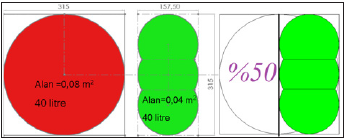
Figure 2: The design and interior view of the LPG tank.

Figure 3: The wireframe view of the LPG tank.
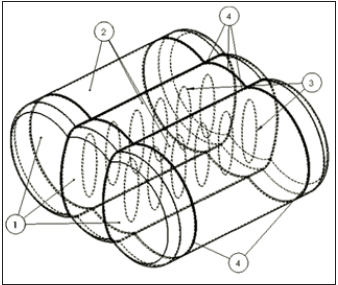
Figure 4: Detailed structural view of the LPG tank.
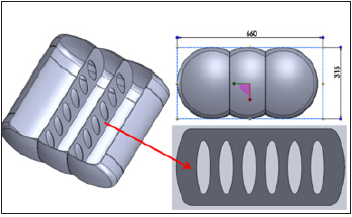
Figure 5: View of LPG tanks types.

Figure 6: Prototype view of 77 liters capacity LPG tank.

Figure 7:A view of the three-cell 41-liter LPG tank.
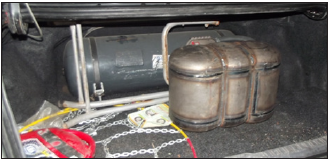
Figure 8:The tank where it is exposed to external factors.
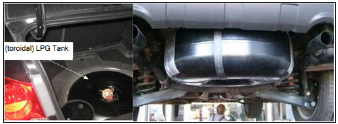
Figure 9:Corroded view of the torus tank mounted on the underside of the vehicle.
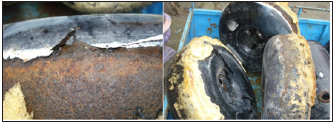
Figures 10 & 11 show the side and top view of the ergonomic LPG tank, which occupies 50% less space, in the hatchback vehicle boot and its comparison with the cylindrical tank. In Figure 12, the space occupied by Hyundai i20 in the luggage compartment of the LPG tank, which has a capacity of 28 liters with 4 cells and a capacity of 3 cells with a capacity of 45 liters, is shown.
Figure 10: Side view of the LPG tank occupying 50% less space in the vehicle.
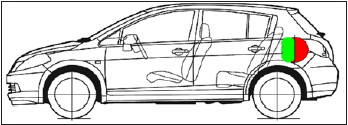
Figure 11: Top view of the LPG tank occupying 50% less space in the vehicle.

Figure 12: View of the 3 and 4-cell LPG tank with 50% space in the vehicle.
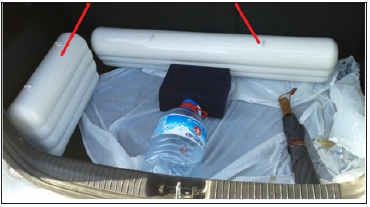
Conclusion
50% of the volume of baggage usage in passenger vehicles will be provided. Since the tank volume is ergonomic, the load on the vehicle will be reduced and thus the fuel consumption will be reduced. It will offer an alternative applicable tank preference for LPG conversion to the users who have luggage volume problems. As the number of conversions of gasoline vehicles to LPG will increase, the demand for LPG, which is less polluting than gasoline and diesel, will increase and thus prevent global warming. (NOx, CO, HC) There will be no need to remove the spare tire for LPG tank installation. Conditions of corrosion formation Cost can be produced at the same cost by using existing cylindrical and toroidal tank production facility. The target audience is LPG vehicle users. In the future, LNG, CNG and hydrogen storage will be used as a strength composite.
Acknowledgement
The author would like to thank the of Kastamonu University for supporting this study. In addition, this study has been applied for patent with the encouragement of TUBITAK 1008 patent, and I would like to take this opportunity to thank TUBITAK for its support.
References
- Kaptan A, Kisioglu Y (2007) Determination of burst pressures and failure locations of vehicle LPG cylinders. International Journal of Pressure Vessels and Piping 84(7): 451-459.
- Gerini A, Monnier G, Bonetto R (1996) Ultra low emissions vehicle using LPG engine fuel (No. 961079). SAE Technical Paper Pp. 1-11.
- ECE-R67 (1999) Acceptance of pressurized LP gas fuel supply apparatus for automobiles. (Translated in Turkish 2001, Ankara, Turkey).
- Kartal F, Kisioglu Y (2017) Fatigue performance evaluations of vehicle toroidal liquefied petroleum gas fuel tanks. Journal of Pressure Vessel Technology 139(4): 1-8.
- Karamangil MI (2007) Development of the auto gas and LPG-powered vehicle sector in Turkey: A statistical case study of the sector for Bursa. Energy policy 35(1): 640-649.
- Kunz RK, Blair MD, Warner MJ, Graham RP (1996) Conformable pressurized fuel storage for increased vehicle range (No. 961673). SAE Technical Paper, Pp. 1-7.
- Kunz R, Golde R (2000) High-pressure conformable hydrogen storage for fuel cell vehicles. Proceedings of the 2000 Hydrogen Program Review, Pp. 1-7.
- Meyer K, Pignagnoli F, Potts D, Hunter G (2014) Light weighting matters in energy storage. Reinforced Plastics 58(4): 20-23.
© 2021 Fuat Kartal. This is an open access article distributed under the terms of the Creative Commons Attribution License , which permits unrestricted use, distribution, and build upon your work non-commercially.
 a Creative Commons Attribution 4.0 International License. Based on a work at www.crimsonpublishers.com.
Best viewed in
a Creative Commons Attribution 4.0 International License. Based on a work at www.crimsonpublishers.com.
Best viewed in 







.jpg)






























 Editorial Board Registrations
Editorial Board Registrations Submit your Article
Submit your Article Refer a Friend
Refer a Friend Advertise With Us
Advertise With Us
.jpg)






.jpg)














.bmp)
.jpg)
.png)
.jpg)










.jpg)






.png)

.png)



.png)






